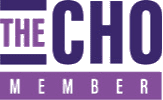Start your FREE Enquiry
Fittings and Contents Form Explained
2 July 2020
What is a Fittings and Contents form?
When selling your home you are required by law to complete a Fittings and Contents form, also referred to as a TA10, which stipulates what fixtures and fittings are included in the sale.
The form is used to make it crystal clear for both the buyer and seller:
• What items will be included in the purchase price.
• Which items the seller is willing to leave but that aren’t included in the purchase price. A price would therefore need to be negotiated between the buyer and the seller for any items that the buyer may wish to purchase. This may include items such as freestanding white goods, curtains, furniture and light fittings.
For fixed fee, no completion no fee conveyancing speak to our property solicitors today for a no-obligation quote for buying, selling or remortgaging.
Speak to our conveyancing team
What are classed as fixtures?
‘Fixtures’ include any items that are ‘fixed’ to the property. Items such as a fitted kitchen, fitted wardrobes or tiled flooring are included in the fixtures list. Fixtures are generally assumed to be included in the purchase price of the property, unless the seller has clearly stated that they are taking the items with them.
What are classed as fittings?
‘Fittings’ include any items that aren’t permanently fixed to the property. Items such as freestanding furniture, mirrors, framed wall art, curtains and shelving are classed as fittings. Garden furniture and ornaments can also be included in the fittings list.
The main difference between fixtures and fittings are that the fixtures are included in the purchase price, whilst the fittings are not. If the buyer wishes to purchase the fittings that they need to be paid to the seller separately, and are not subject to Stamp Duty.
What is included in the Fittings and Contents Form?
The Fittings and Contents Form is split into 11 sections, with the seller having to tick a box alongside each row to state whether the item is: included, excluded or is non-applicable. In the instance where the seller states that an item is excluded from the sale, they may offer to sell it to the buyer by inserting a price in the appropriate box. The buyer is free to decide if they want to buy the items or not. The seller is responsible for negotiating the sale of any items directly with the buyer or their estate agent. Should the seller or buyer wish to instruct their solicitor to negotiate on their behalf, this may incur additional charges.
The sections of the Fittings and Contents Form are split as follows:
• Basic Fittings: Including items such as the boiler, radiators, fires and surrounds, window fittings, light switches, external and internal doors, electric sockets and roof insulation.
• Kitchen: Appliances including the oven, fridge-freezer, washing machine, tumble dryer, the hob, extractor fan and dishwasher.
• Bathroom: Including the bathtub, shower and fittings, towel rail, taps, bathroom cabinet, toilet roll holders and bathroom mirror.
• Carpets: States the carpet and flooring in each room i.e. the living room, kitchen, bedrooms, hallway, staircase and landing.
• Curtains and curtain rails: This includes the curtain rails, blinds, poles and pelmets in each room of the property.
• Light fittings: Including the light fittings such as lampshades and ornamental style lighting in each room. It is important to note that if sellers remove light fittings that they should replace the fitting with a bulb, bulb holder or ceiling rose, to ensure that the property is left in a safe condition.
• Fitted units: This includes any fitted units such as fitted cupboards, shelves and fitted wardrobes in each of the rooms.
• Outdoor area: Including items such as garden furniture, garden ornaments, trees, plants and shrubs, outdoor heaters, outdoor lighting, barbecue, shed and clothes line.
• Television and telephone: This states if the property comes with telephone receivers, TV aerial, radio aerial and satellite dish.
• Stock of fuel: States if the property includes a stock of fuel including oil, wood or Liquefied Petroleum Gas (LPG). This will only apply to properties that include a fuel burning appliance, such as a log burner.
• Other items: Any other items that are included in the property that may or may not be included within the sale of the home, which aren’t included in the aforementioned list.
It is important that the Fittings and Contents Form is completed accurately in order to avoid disputes between the buyer and seller, that could arise when the buyer moves in and the property doesn’t include items that they believed to be included in the purchase price.
If you’re looking to buy, sell or re-mortgage your home contact TRUE Solicitors today. Our expert residential conveyancing solicitors provide an efficient, proactive service. We offer fixed fee, stress fee conveyancing, with a no completion, no fee guarantee. You can also get a free estimate using our simple online fee calculator.




